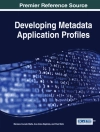If you are serious about getting up to speed with Excel 2010, thisclear, concise guide is the ideal companion for fast and efficientlearning. The author illustrates the main functions of Excel 2010, explaining everything you need to know in plain, jargon-free English with full-colour screen shots and numbered, step-by-stepinstructions.
The simple, yet elegant design features a multitude of images aswell as tips & tricks to make this a perfect reference for allages – just follow the instructions on your own PC.
Whether you are a beginner or an experienced user in need of aquick grip on the updates in Excel 2010, read on for:
* Excel 2010 basics
* workbook fundamentals
* formatting worksheets and enhancing them with graphics
* analysing data and communicating results with charts and Pivot Tables
Packed with advice and illustrations, this visual tutorial isexcellent value for money. Learn something new today – readit, try it and become your own expert with Simply Excel2010!
Innehållsförteckning
1 WORKING WITH EXCEL.
Getting to Know Excel.
Start Excel.
Tour the Excel Window.
Work with Excel’s Ribbon.
Customise the Quick Access Toolbar.
Customise the Ribbon.
Work with Smart Tags.
Change the View.
Configure Excel Options.
2 ENTERING AND EDITING EXCEL DATA.
Learning the Layout of a Worksheet.
Understanding the Types of Data You Can Use.
Enter Text into a Cell.
Enter a Number into a Cell.
Insert a Symbol.
Edit Cell Data.
Delete Data from a Cell.
3 WORKING WITH EXCEL RANGES.
Select a Range.
Fill a Range with the Same Data.
Fill a Range with a Series of Values.
Move or Copy a Range.
Insert a Row or Column.
Insert a Cell or Range.
Delete Data from a Range.
Hide a Row or Column.
Freeze Rows or Columns.
Merge Two or More Cells.
Transpose Rows and Columns.
Define or Change a Range Name.
Use Worksheet Text to Define a Range Name.
Navigate a Workbook Using Range Names.
4 FORMATTING EXCEL RANGES.
Change the Font and Font Size.
Apply Font Effects.
Change the Font Colour.
Align Text Within a Cell.
Center Text Across Multiple Columns.
Rotate Text Within a Cell.
Add a Background Colour to a Range.
Apply a Number Format.
Apply an Auto Format to a Range.
Apply a Conditional Format to a Range.
Apply a Style to a Range.
Change the Column Width.
Change the Row Height.
Wrap Text Within a Cell.
Add Borders to a Range.
5 BUILDING FORMULAS AND FUNCTIONS.
Understanding Excel Formulas.
Build a Formula.
Understanding Excel Functions.
Add a Function to a Formula.
Add a Row or Column of Numbers.
Build an Auto Sum Formula.
Add a Range Name to a Formula.
Reference Another Worksheet Range in a Formula.
Move or Copy a Formula.
6 MANIPULATING EXCEL WORKSHEETS.
Create a New Worksheet.
Move a Worksheet.
Copy and Rename a Worksheet.
Delete a Worksheet.
Change the Gridline Colour.
Toggle Worksheet Gridlines On and Off.
Toggle Worksheet Headings On and Off.
7 DEALING WITH EXCEL WORKBOOKS.
Create a New Blank Workbook.
Create a New Workbook from a Template.
Save a Workbook.
Open a Workbook.
Arrange Workbook Windows.
Find and Replace Text in a Workbook.
Modify Workbook Colours.
Set Workbook Fonts.
Choose Workbook Effects.
Apply a Workbook Theme.
8 ANALYSING EXCEL DATA.
Sort a Range.
Filter a Range.
Set Data Validation Rules.
Convert a Range to a Table.
Create a Data Table.
Summarise Data with Subtotals.
9. VISUALISING DATA WITH EXCEL CHARTS.
Examining Chart Elements.
Understanding Chart Types.
Create a Chart.
Add Chart Titles.
Add Data Labels.
Position the Chart Legend.
Display Chart Gridlines.
Display a Data Table.
Change the Chart Layout and Style.
Format Chart Elements.
Customise a Chart Element Background.
Set a Chart Element’s Outline.
Add Effects to a Chart Element.
Apply a Style to a Chart Element.
10 COLLABORATING WITH OTHER PEOPLE.
Add a Comment to a Cell.
Protect a Workbook.
Share a Workbook with Other Users.
Track Workbook Changes.
Accept or Reject Workbook Changes.
Make a Workbook Compatible with Earlier Versions of Excel.
Collaborate on a Workbook Online.
INDEX.
Om författaren
Paul Mc Fedries (Toronto, Ontario) is the president of Logophilia Limited, a technical writing company. He has been programming since he was a teenager in the mid-1970s and has programmed everything from mainframes to desktops to bar code scanners. He has worked with many different languages, including Fortran, assembly language, C++, and, Java Script. Paul has written more than three dozen books that have sold more than three million copies worldwide, including: Windows Vista Simplified, Teach Yourself Visually Windows Vista, Macs Portable Genius, Office 2007 Visual Quick Tips, and Teach Yourself VISUALLY Macs. Paul encourages all readers to drop by his Web site, (mcfedries.com).












